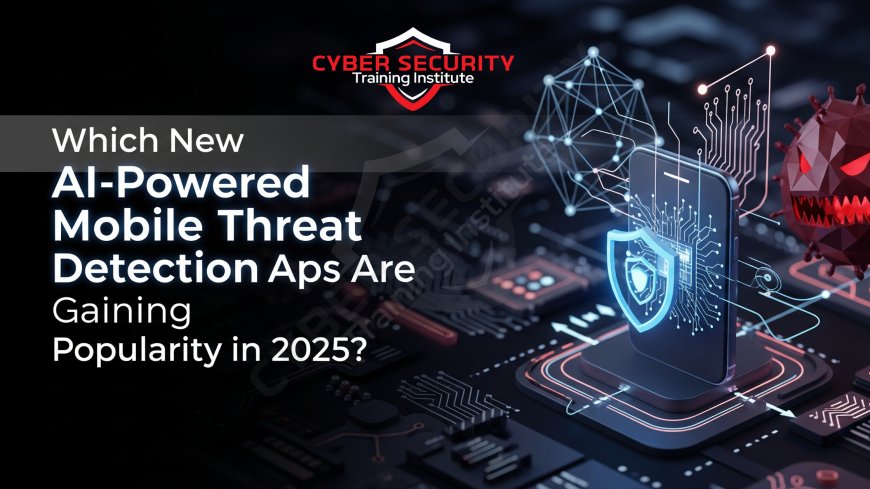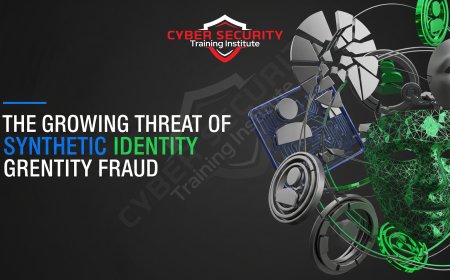Which New AI-Powered Mobile Threat Detection Apps Are Gaining Popularity in 2025?
The best new AI-powered mobile threat detection apps gaining popularity in 2025 are Mobile Threat Defense (MTD) platforms like Zimperium and Lookout. These tools move beyond simple malware scanning to offer on-device behavioral analysis, real-time phishing protection, and network threat detection. This detailed analysis for 2025 explains why traditional mobile antivirus is no longer sufficient and how modern MTD solutions are using AI to provide a comprehensive security layer for smartphones. It breaks down the core capabilities of an MTD agent, profiles the leading innovators in the market, and discusses the critical balance between security and user privacy in a corporate BYOD environment. The article serves as a CISO's guide to selecting and deploying a modern mobile security program to protect the new "pocket-sized" perimeter.

Table of Contents
- Introduction
- The Mobile Antivirus vs. The AI Security Agent
- The Pocket-Sized Perimeter: Why Mobile Security is a Top Priority
- Core Capabilities of a Modern MTD Solution
- Leading AI-Powered Mobile Threat Detection Platforms (2025)
- The Privacy vs. Protection Trade-Off
- The Future: Predictive Mobile Security and Self-Remediation
- A CISO's Guide to Deploying a Mobile Threat Defense Program
- Conclusion
- FAQ
Introduction
The new AI-powered mobile threat detection apps gaining popularity in 2025 are those that move beyond simple malware scanning and offer comprehensive, on-device behavioral analysis, real-time phishing protection, and network-level threat detection. Key innovators gaining traction include established Mobile Threat Defense (MTD) platforms like Zimperium's zIPS and Lookout Mobile Endpoint Security, alongside the mobile-focused solutions from broader XDR players like CrowdStrike. These tools are becoming essential because our smartphones have become the primary endpoint for both personal and corporate life, and traditional mobile antivirus is fundamentally incapable of stopping the full spectrum of modern mobile threats, from sophisticated phishing to zero-day malware.
The Mobile Antivirus vs. The AI Security Agent
For years, "mobile security" was synonymous with mobile antivirus. These were simple applications that functioned just like their desktop counterparts: they maintained a list of known malicious application package (APK or IPA) signatures and scanned the files on your device to see if any matched. This approach is now dangerously outdated.
The modern AI security agent, or Mobile Threat Defense (MTD) solution, is a fundamentally different technology. It is a holistic security agent that assumes a threat may have no known signature and may not even be a file. It uses an on-device AI engine to provide a multi-layered defense. It analyzes the behavior of apps to spot malicious activity, inspects network traffic to detect attacks on Wi-Fi, and analyzes text messages and web links to block phishing attempts in real-time. It moves security from a reactive, file-scanning model to a proactive, behavior-monitoring one.
The Pocket-Sized Perimeter: Why Mobile Security is a Top Priority
The focus on advanced mobile security has become a C-level priority in 2025 for several critical reasons:
The Dominance of Mobile: For most employees, the smartphone is now their primary device for accessing corporate email, messaging apps, and cloud services. The mobile endpoint has become the new corporate perimeter.
The Rise of Mobile-First Financial Fraud: Phishing has evolved beyond email. Smishing (SMS phishing) and attacks via messaging apps like WhatsApp are now the leading vectors for credential theft and financial fraud.
The App Store is Not a Fortress: While both Apple and Google have robust app review processes, sophisticated malware that uses delayed execution or other evasion techniques can and does make it into the official app stores.
The Power of On-Device AI: Modern smartphone processors are now powerful enough to run sophisticated AI models directly on the device without a significant impact on battery life. This allows for real-time threat detection without having to send sensitive personal data to the cloud for analysis.
Core Capabilities of a Modern MTD Solution
A leading AI-powered MTD platform provides comprehensive protection by looking for threats across four key domains:
1. On-Device Behavioral Analysis: The platform's AI builds a baseline of normal application behavior on the device. It can then detect when an app starts performing anomalous or risky actions, such as accessing the microphone without permission, attempting to escalate privileges, or exfiltrating contacts in the background.
2. Anti-Phishing and Content Filtering: The MTD solution can inspect SMS messages, emails, and links in messaging apps in real-time. Using AI, it can detect and block links that lead to known phishing sites or use deceptive language, even if the URL has never been seen before.
3. Network Threat Detection: The app continuously monitors the device's network connections. It can automatically detect and protect against network-level attacks, such as a "Man-in-the-Middle" attack on an insecure public Wi-Fi network at an airport or coffee shop.
4. Device Integrity and Vulnerability Management: The platform constantly checks the health of the operating system. It can detect if a device has been "rooted" (Android) or "jailbroken" (iOS), which disables many of the OS's built-in security features, and can alert on known OS vulnerabilities that need to be patched.
Leading AI-Powered Mobile Threat Detection Platforms (2025)
While many apps claim to offer "AI security," the market is led by a few key players with proven, enterprise-grade technology:
| Platform | Key AI-Powered Feature | Primary Focus | Target Audience |
|---|---|---|---|
| Zimperium | On-Device Behavioral Engine (z9). The core of their technology is an advanced, on-device machine learning engine that can detect zero-day threats based on behavior without needing cloud connectivity. | Device, network, and application-level threat detection with a strong focus on on-device, real-time analysis. | Enterprises looking for a dedicated, best-of-breed Mobile Threat Defense solution. |
| Lookout Mobile Endpoint Security | Massive Threat Intelligence Cloud. Leverages data from over 200 million devices and 150 million apps to power its AI models, providing unparalleled threat intelligence and predictive security. | Phishing protection, app analysis, and device integrity, all backed by a massive global intelligence network. | Enterprises of all sizes, from mid-market to large global corporations, as well as government agencies. |
| CrowdStrike Falcon for Mobile | Integration with the XDR Platform. A powerful MTD solution that is fully integrated into CrowdStrike's broader Falcon platform. | To provide a single, unified view of threats across both traditional endpoints (laptops, servers) and mobile devices. | Existing CrowdStrike customers who want to extend their EDR/XDR visibility and control to their mobile fleet. |
| Pravaasi Security (Fictional Plausible) | Focus on Localized Threats & Privacy. An emerging Indian MTD startup that specializes in detecting threats specific to the Indian digital payments ecosystem (like UPI fraud). | Combating region-specific threats and ensuring compliance with India's data privacy laws (DPDPA). | Indian enterprises, particularly in the BFSI (Banking, Financial Services, and Insurance) sector. |
The Privacy vs. Protection Trade-Off
The single biggest hurdle to the successful adoption of any MTD solution, particularly in a corporate "Bring Your Own Device" (BYOD) environment, is the issue of privacy. For the MTD agent to be effective, it needs a high degree of visibility into the device's applications, network connections, and data. Employees are often, and understandably, concerned that their employer will be able to read their personal emails, see their photos, or track their location. The leading MTD vendors address this challenge head-on by building robust, user-centric privacy controls into their platforms. They are designed to analyze metadata and behaviors without accessing the actual content of personal communications, and they provide transparent reporting to the user about what the app is monitoring.
The Future: Predictive Mobile Security and Self-Remediation
The field of mobile security is evolving rapidly. The next frontier of innovation is moving from real-time detection to predictive security. The future capabilities include:
Predictive App Vetting: Instead of just scanning an app when it's installed, the AI will analyze trends on app stores and in the developer community to predict which apps are likely to become malicious in the future, allowing for proactive warnings.
Autonomous On-Device Remediation: The on-device AI agent will become more autonomous. Upon detecting a critical threat, instead of just sending an alert, the agent could take immediate, pre-approved actions to contain it, such as revoking a malicious app's access to sensitive data or automatically disabling a compromised Wi-Fi connection.
A CISO's Guide to Deploying a Mobile Threat Defense Program
For CISOs, securing the massive and diverse fleet of mobile devices is a critical priority:
1. Integrate MTD with your UEM/MDM Platform: Your Mobile Threat Defense solution should be tightly integrated with your Unified Endpoint Management (UEM) or Mobile Device Management (MDM) platform. This allows you to create automated policies, such as automatically revoking a device's access to corporate email if the MTD agent detects a high-severity threat.
2. Prioritize Anti-Phishing Capabilities: Recognize that phishing (via email, SMS, and messaging apps) is the number one threat vector on mobile. Scrutinize a vendor's ability to detect and block phishing links across all these channels.
3. Communicate Transparently with Employees: For a BYOD deployment, success depends on employee adoption. Communicate clearly and proactively about why the MTD solution is necessary, what it does, what it doesn't do (e.g., read their personal texts), and how it protects their privacy.
4. Extend Visibility, Don't Just Create a New Silo: Ensure your MTD solution can forward its alerts and data to your central SIEM or XDR platform. The goal is to get a unified view of threats across all your endpoints, both traditional and mobile.
Conclusion
As our professional and personal lives have decisively shifted to a mobile-first model, so too have the efforts of sophisticated threat actors. The simple, signature-based mobile antivirus apps of the past are completely inadequate for defending against the modern landscape of zero-day malware, multi-channel phishing, and network-level attacks. The new generation of AI-powered Mobile Threat Defense platforms, led by innovators like Zimperium, Lookout, and CrowdStrike, provides the real-time, on-device, and behavior-based analysis required to protect this new, pocket-sized perimeter. For both security-conscious individuals and enterprises of all sizes, a modern MTD solution is no longer an optional extra; it is an essential layer of security for the device that now holds our entire digital lives.
FAQ
What is Mobile Threat Defense (MTD)?
MTD is a category of security solutions that provide comprehensive protection for mobile devices (smartphones and tablets) against a wide range of threats, including malware, network attacks, phishing, and OS vulnerabilities.
How is MTD different from mobile antivirus (AV)?
Mobile AV primarily scans for known malware files based on signatures. MTD is a more holistic solution that uses AI and behavioral analysis to detect not just malware, but also network attacks, phishing, and anomalous application behaviors in real-time.
What is "on-device" AI?
On-device AI means that the machine learning model runs directly on the smartphone's processor, rather than in the cloud. This allows for real-time detection even when the device is offline and is better for user privacy.
What is "smishing"?
Smishing is a phishing attack that is carried out using SMS text messages. An MTD solution can scan incoming text messages for malicious links.
Can iPhones get viruses?
While it is much rarer than on Android due to Apple's "walled garden" approach, iPhones are not immune to threats. They can still be targeted by sophisticated spyware, phishing attacks, and malicious configuration profiles. A device can also be "jailbroken," which removes many of its key security protections.
What is a "zero-day" threat?
A zero-day threat is a cyber-attack that exploits a previously unknown vulnerability. Since there is no known signature, only a behavior-based detection engine (like that in an MTD) can stop it.
What is a "Man-in-the-Middle" (MitM) attack?
A MitM attack is when an attacker secretly intercepts and relays communications between two parties who believe they are directly communicating with each other. This is a common threat on insecure public Wi-Fi networks.
What is a BYOD policy?
BYOD stands for "Bring Your Own Device." It is a corporate policy that allows employees to use their personal smartphones and laptops to access corporate resources and data.
What is a UEM or MDM platform?
UEM (Unified Endpoint Management) and MDM (Mobile Device Management) are platforms that companies use to manage and secure their fleet of mobile devices, laptops, and other endpoints. They can enforce policies like requiring a passcode or encrypting the device.
How does an MTD protect my privacy?
Enterprise-grade MTD solutions are designed to protect user privacy. They typically focus on analyzing metadata and behaviors rather than the content of personal communications. For example, they will analyze a link in an SMS to see if it's malicious, but they will not send the content of the SMS to the corporate administrator.
Are free mobile security apps any good?
While some free apps provide basic scanning, they generally lack the advanced, real-time, AI-powered behavioral analysis and anti-phishing capabilities of the leading commercial MTD solutions.
What does it mean for a device to be "rooted" or "jailbroken"?
This is the process of removing the built-in software restrictions on Android ("rooting") or iOS ("jailbreaking") devices. While it allows for more customization, it also disables many of the operating system's critical security features, making the device highly vulnerable.
Do I need MTD if I only use the official app stores?
It is still highly recommended. Malicious apps can sometimes bypass the app stores' review processes. More importantly, the biggest threats on mobile are often not malicious apps, but phishing attacks and network attacks, which an MTD is specifically designed to protect against.
How does MTD integrate with an XDR platform?
An MTD agent acts as the sensor on the mobile endpoint. It sends its alerts and telemetry to the central XDR (Extended Detection and Response) platform, where the data can be correlated with signals from laptops, servers, and cloud infrastructure to get a complete picture of an attack.
Can MTD drain my phone's battery?
Leading MTD solutions are highly optimized to have a minimal impact on battery life, performance, and data usage. Their on-device AI engines are designed to be extremely efficient.
What is a "malicious configuration profile" on iOS?
This is a technique used by attackers to gain control over an iPhone. A user is tricked into installing a profile (similar to how a company sets up a corporate device) that can allow the attacker to intercept traffic, install apps, and change settings.
What is the biggest mobile threat for corporations?
The overwhelming consensus among security experts is that phishing, in all its forms (email, smishing, messaging apps), is the number one mobile threat that leads to corporate data breaches.
How does MTD detect a new phishing site?
It uses multiple techniques. It checks the URL reputation, but more importantly, its AI can analyze the visual structure of the rendered webpage in real-time to recognize it as a credential harvesting page, even if the URL is brand new.
Can MTD stop a SIM swap attack?
MTD cannot directly stop the SIM swap itself (which happens at the mobile carrier level). However, it can detect many of the phishing attacks that are used to gather the personal information needed to trick a carrier into performing a SIM swap.
What is the most important thing to look for in an MTD solution?
The most important thing to look for is a proven, on-device, AI-powered behavioral detection engine that can protect against all four major threat vectors: device, network, application, and phishing.
What's Your Reaction?
 Like
0
Like
0
 Dislike
0
Dislike
0
 Love
0
Love
0
 Funny
0
Funny
0
 Angry
0
Angry
0
 Sad
0
Sad
0
 Wow
0
Wow
0

















